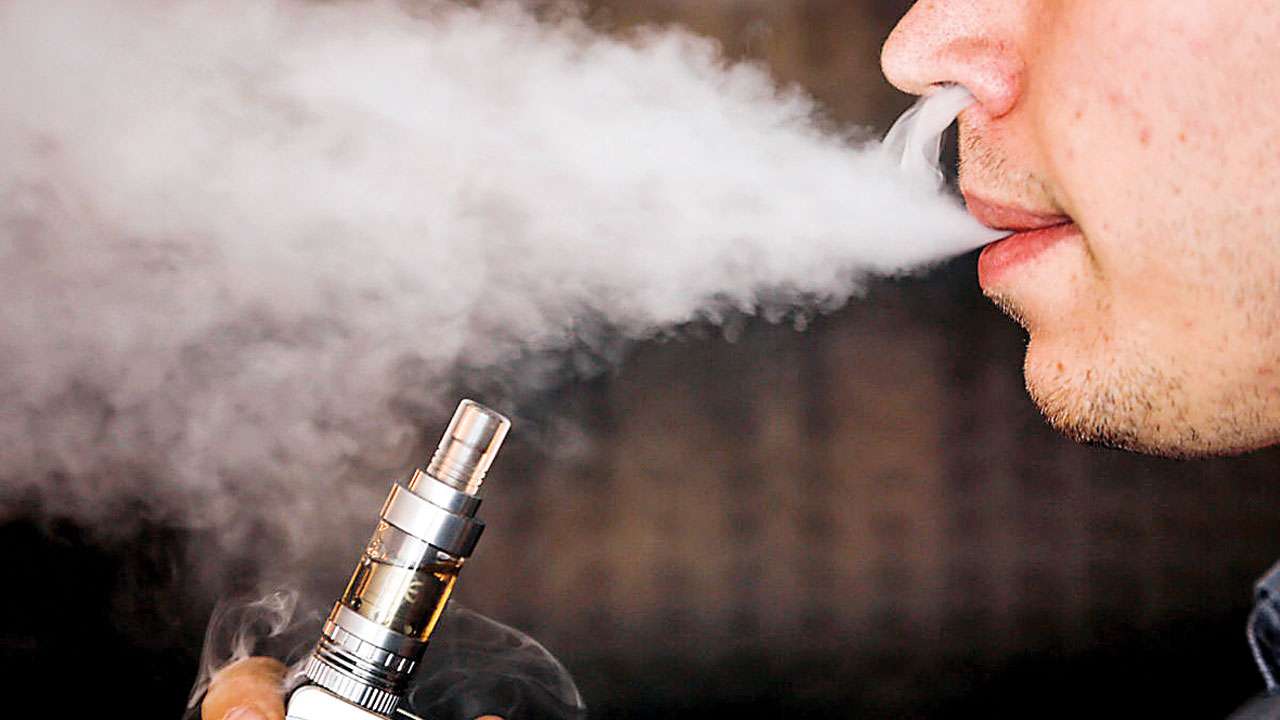
Vaping is the practice of inhaling and exhaling vapour produced by an electronic cigarette or similar devices. E-cigarettes, also known as electronic cigarettes, e-cigs, electronic nicotine delivery systems (ENDS), e-hookahs, mods, vape pens, vapes and tank system are hand-held, battery-powered devices that heat a solution of humectants (usually propylene glycol or glycerol), nicotine, flavourings (in many cases) and other chemicals to deliver an aerosol that is inhaled by the user.
There is enough scientific evidence showing harmful health effects of e-cigarette use, including cardiovascular diseases, impaired brain development in adolescents, renal cancers and lung diseases.
The vapours produced are also not safe for users and bystanders. These aerosols exhaled and inhaled contain harmful substances, including heavy metals, volatile organic compounds and ultrafine particles that can be inhaled deeply into the lungs.
Nicotine, which is an addictive drug in regular cigarettes and other tobacco products, is the main ingredient in e-cigarettes. A e-cigarette cartridge or pod contains as much nicotine as a pack of 20 regular cigarettes. Nicotine is rapidly delivered to the brain due to higher temperature at which e-cigarettes run.
These products are being promoted for helping people quit smoking and are not intended for use by adolescents. However, it is worth noting that in India, awareness of e-cigarettes among different age-groups is the highest among adolescents! If these products are not intended for use by adolescents, then why are many e-cigarettes available in children-friendly flavours?
In addition to making e-cigarettes more appealing to young people, some of these flavorings may also have health risks. Diacetyl and acetyl propylene are found in a large proportion of sweet flavoured e-cigarette liquids. Diacetyl is associated with a lung disease called ‘Popcorn Lungs’. Exposure to e-cigarettes, even if considered for supposed smoking cessation, is not devoid of health risks. The current body of evidence of e-cigarettes being a cessation device is inconclusive.
Evidence from other countries like the US, clearly shows increase in e-cigarette use among youth, since its introduction in 2007. By 2014, e-cigarettes were the most commonly used product among the US youth.
The sharp increase of 78% in e-cigarette use during 2017-2018 was attributed to the increasing popularity of e-cigarette called JUUL, which is shaped like a USB flash drive. These products are popular among youth due to its unique shape that allows its discreet use and parents are unaware that these USB-shaped products in their child’s possession are actually nicotine delivery devices!
There is mounting evidence on how e-cigarettes are becoming gateway products to introduce new cigarette smoking adolescents and young adults to become conventional cigarette smokers.
Nicotine use, during adolescence, harms the developing brain and impacts parts that control attention and learning. E-cigarettes run on higher temperatures and this increases rapid nicotine delivery to the brain.
What we learn from countries like US is if e-cigarettes are introduced in the market, its use among adolescents is difficult to control. The use of e-cigarettes occurs at an alarming rate among both cigarette smokers and new cigarette-smoking youth.
Therefore even though it is not recommended that non-smokers start using e-cigarettes, it is happening at a large scale nevertheless, especially among young people.
There is evidence to suggest that e-cigarettes are expanding the nicotine market by attracting youth to the low-risk factor of these products, thus aiding their transition to smoking cigarettes.
A country with 358 million young people like India cannot afford to introduce these new addictions, if it has to take advantage of the demographic dividend.
It is the policies of today that will define the future health of our youth. A country still struggling to regulate myriad forms of smoking tobacco can ill afford another addiction that will pose greater health challenges, compromise health of vulnerable population in India and further increase our health care costs.
Realising this threat early on, the government of India released a health advisory against e-cigarette in August 2018, advising states and Union Territories to prohibit sale (including online sale), manufacture, distribution, trade, import and advertisement of ENDS.
India has been a global leader in tobacco control and continues to remain committed to this agenda. This advisory will go a long way in protecting the youth from the threats posed by these new emerging tobacco products.
Author is additional professor at Public Health Foundation of India.
Views expressed are personal